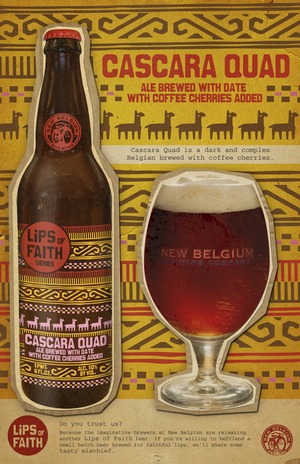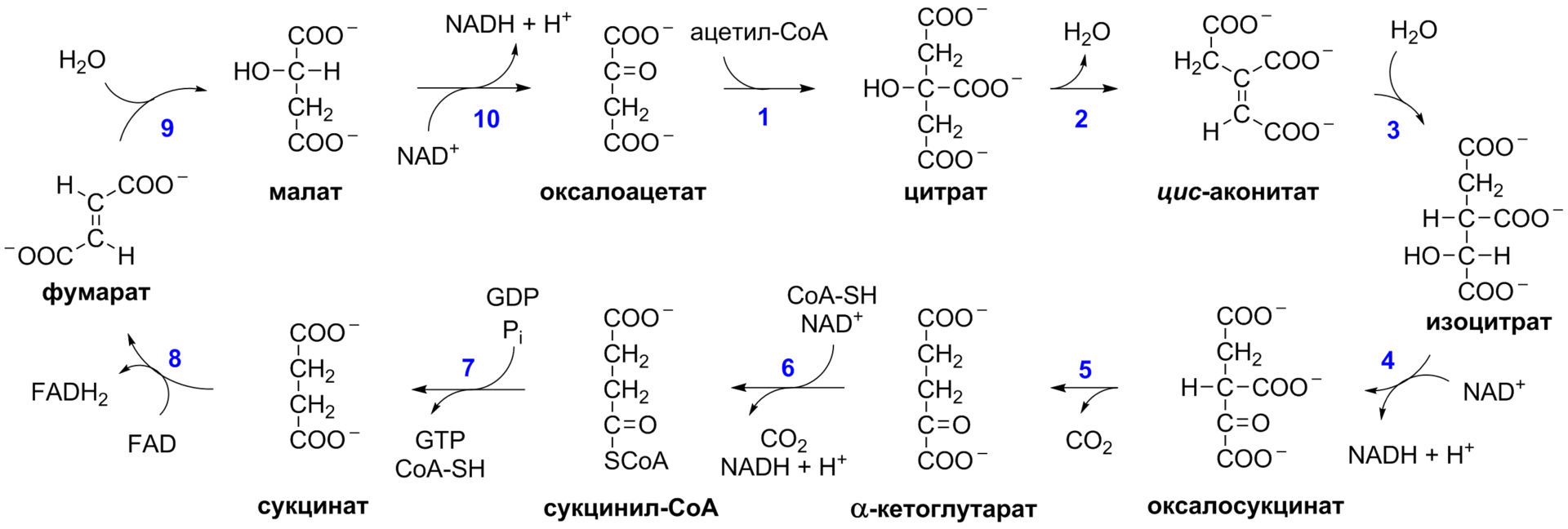Stewed coffee fruit compote. Meet Cascara - Cyclist's Best Friend

Continuing the coffee and effects cycle. In the process of immersion in the topic, I finally became caffeine-dependent, but this does not bother me at all. I can quit at any time. By the way, I have almost finished testing espresso for the absorption of light in various parts of the spectrum, but this publication will be a little later. In the meantime, back to Cascara.
Cascara, which is coffee, should not be confused with Cascara, which Rhámnus purshiána is a North American buckthorn. Buckthorn is a very harsh laxative and the effects of consumption can be very unexpected. Coffee cascara is a rather rare drink, which is prepared from dried pulp of coffee berries. The confusion arose due to the common name of the Spanish word " cascara"-" shell "," bark ". The buckthorn is used exactly bark. Other names for the cascara are sultana, qishr and buno.
In short, I got the packaging for testing and was surprised to find that I found an almost perfect drink for sports. Moreover, there will be a very moderate amount of caffeine in it: studies have shown that even with the strongest cascara brewing, the caffeine content was 111.4 mg / l, while 400-800 mg fall per liter of brewed coffee. Let's stick with a stick and try to cook sports compote of coffee dried fruits.
Phase 0 - Learning

Stages of ripening coffee berries.
Several years ago, I grew at home Coffea arabica nana - a dwarf version of arabica. Despite my mockery of the plant, it even bloomed and fructified. The ripened berries were sugary-sweet with an interesting sourness. Alas, then came the scale shield and ate everything.
Morality
. Quarantine new plants. I almost lost a collection of citrus fruits due to the scale shield brought from the purchased laurel.

If you look at the berry in a section, then we will see a red pulp and two coffee beans inside. In its wild form, the genus Coffee refers to plants that are settled thanks to birds. Hence the bright, noticeable red berries, sweet flesh. Plus, birds do not know how to chew, which means they will not damage the grains so valuable to the plant. The berries themselves were not particularly interested in the man - there are many more delicious options. Actually, in ordinary production no one bothers with the preservation of pulp, and all attention is paid to the processing of grains. But in some regions, mainly in Yemen and El Salvador, coffee pulp is used to make another product - cascaras. The pulp is separated from the grains, dried in the sun and subjected to additional heat treatment - a little fry or bake. In the original version, Coffee cherry teaIt is considered a “drink of the poor”, as it is, in fact, a by-product of the production of expensive arabica. There are even more exotic options from pre-fermented berries or with smoking in the finale. And of course, confirming the traditional thesis that alcohol can be driven even from a stool, you can find liquors, beer and other drinks based on it.

In the USA, New Belgium brewery even began to brew ale based on it.
In general, this is a rather rare type of production, which is why cascara is almost not exported. Production volumes are small and the chances of accidentally encountering dried pulp of coffee berries in a store are close to zero.
Phase 1 - gently poke with a stick

Actually, that is why I immediately took myself a big pack when my beloved roaster got a Bolivian cascara. Guys are bought by microlots when they take rare varieties. Very often, the most interesting things are sorted out before you have time to try. In the parcel came something completely different from the usual coffee. In principle, this was expected from the beginning, but a light stupor caused the appearance of dried pieces, painfully reminiscent of dried fruits that were familiar to us in appearance and aroma. I used the recommended basic recipe: I poured boiling water in a kettle, poured a handful of dried berries, and waited 5 minutes. I tried and was upset. The taste was very mild, light pleasant acidity, notes of dried apples and rose hips, but very very weak. I went and made myself a cup of espresso from the ideologically correct Guatemala Maracaturra El Socorro. I forgot about the teapot with cascara.

The next morning I saw an infusion overnight in a teapot. The drink opened completely on the other hand, with all the notes of apples, strawberries and something citrus. In the end, I decided to finalize the recipe and see what useful can be squeezed out of it. To cook a major compote of coffee dried fruits is somehow too small.
Phase 2 - disassemble into components

The bike has not yet been scratched and my wife is almost already at the time of photographing))
First of all, I decided to clarify what was interesting in the composition. Plus, he just started cycling actively and began to look for a good option for sports drinking. The high content of vitamin C in pulp, citric acid and a little caffeine caught my eye. What does this give us during exercise?
Vitamin C
It plays an important role in protecting cellular structures from damage by free radicals and reactive oxygen species. Helps deal with oxidative stress. The physiological need for adults is 90 mg / day, while playing sports - 100-150 mg / day. From the point of view of sports, one of the positive effects is the anti-catabolic activity of the vitamin due to the suppression of cortisol. Also, this vitamin suppresses peroxidation, which negatively affects the work of muscles.
Sources
- Effects of Ascorbic Acid on Serum Cortisol and the Testosterone: Cortisol Ratio in Junior Elite Weightlifters Marsit, Joseph L .; Conley, Michael S .; Stone, Michael H .; Fleck, Steven J .; Kearney, Jay T .; Schirmer, Ginger P .; Keith, Robert L .; Kraemer, William J .; Johnson, Robert L.
- «International Journal of Sports Medicine»: Vitamin C Supplementation Attenuates the Increases in Circulating Cortisol, Adrenaline and Anti-Inflammatory Polypeptides Following Ultramarathon Running, Peters EM, Anderson R, Nieman DC, Fickl H, Jogessar V. October 2001
- www.charlespoliquin.com/Blog/tabid/130/EntryId/1562/Tip-435-Take-Vitamin-C-Post-Workout-To-Lower-Cortisol-Recover-Faster.aspx
- Effect of vitamin C supplementation on lipid peroxidation, muscle damage and inflammation after 30-min exercise at 75% VO2max. 1: J Sports Med Phys Fitness. 2008 Jun;48(2):217-24.
Lemon acid
It largely determines the acidity of the finished drink. Banal, at first glance, a thing familiar from childhood. However, for doctors and biologists this is an important element of the tricarboxylic acid cycle (Krebs cycle). For most, this name evokes vague memories of a school and biology textbook for grade 9. Let me remind you)

If you approach this issue in a very simplified way, then this cycle is the core of the energy system of our body. Everything that you burn for energy ends sooner or later with this cycle. As a result of a series of scavenges of hydrogen and CO 2 from a molecule of citric acid, we get 24 ATP molecules - the basic source of energy for all biochemical reactions.

After the end of the cycle, the tormented remains of oxal acetate due to the external acetyl-CoA thrown into the furnace are again converted into citric acid. And the cycle begins anew.
What do we get by introducing citric acid into the body? A bunch of ATP where necessary. It will be burned in the furnace of mitochondria in muscle cells and in other places where there is a need. It’s about how instead of crude, crude oil to immediately spray aviation kerosene. Not for nothing that the same citric and succinic acid is part of many drugs - for example, Limontar. Such a universal source for correcting metabolic disorders and smoothing peaks in energy consumption. By the way, it helps from a hangover) There are also minuses - I do not advise gastritics. But they generally are annoying liquids / food and acid drinks are contraindicated.
Caffeine
I already spoke in detail about him in past publications. Here's a quote from SportsWiki :
Most studies on caffeine have focused exclusively on sports that require increased stamina. Their main conclusion is that for most of these athletes, caffeine helps to achieve better athletic performance. There are three versions that explain this reaction. The first of them was initially considered the most plausible and is associated with the ability of caffeine to stimulate the burning of fat for energy. Caffeine promotes the production of adrenaline, a hormone that speeds up the entry of fatty acids into the bloodstream. During initial physical exertion, the muscles use fatty acids available for energy production, while maintaining intact muscle glycogen stores. Separate scientific studies have confirmed this theory.
The second version is as follows: caffeine is able to directly affect skeletal muscles by modifying key enzymes or systems that regulate the process of breakdown of carbohydrates inside cells. But the study of this theory did not reveal unambiguous results and was not completed.
The third version may actually be key to understanding how caffeine makes you feel that you have done less work than you actually do. According to this version, this is due to the fact that caffeine, due to its direct effect on the central nervous system, can provide a psychological effect, making athletes feel that they are not working so hard, or somehow maximize the strength of muscle contractions. Now we know that caffeine has the ability to bypass the blood-brain barrier and inhibit the action of adenosine, a neurotransmitter that causes drowsiness by slowing down the activity of nerve cells. In the brain, caffeine looks like adenosine and can fuse with adenosine receptors on brain cells. But caffeine does not have the same effect as adenosine, It does not slow down the activity of nerve cells. Instead, it stimulates the production of adrenaline, a hormone that improves well-being during exercise. Currently, this is the prevailing version, as much as possible confirmed by scientific research.
In general, there is a subjective feeling of some “boost” during a bike ride. But it’s hard for me to judge by myself, since I drink 4-5 cups of espresso a day and I already have quite a pronounced dependence. As a result, the sensitivity of caffeine receptors is significantly reduced. Cascar contains a little caffeine - 20-25% of an espresso of the same volume. But overall, his presence is palpable.
Phase 3 - patch source
So, we are finalizing the extraction of snacks from cascara:
We take 3-4 grams of dry cascara per 100 ml of boiling water. Pour it all into a thermos. I have a thermos from Ikea - it fits perfectly in the holder under the flask on the bike. Throw in a piece of cinnamon, possibly nutmeg or cloves to taste. Since it’s nice to have easily digestible carbohydrates during exercise, add sugar. Also to taste, but not to syrup. Leave a thermos for the night.
In the morning we filter, pour over ice (yes, in Krasnodar it’s now +21) and go to work by bicycle)
Phase 4 - Conclusions
Do not expect the unique nectar of the gods. But the drink is worth a try. True interesting. But in general, it turns out something very similar to rose hips and dried apples.
Previous publications of the cycle:
Hello, I am Meklon and I am caffeine-dependent.
Chronicles of the laboratory: how we considered ground coffee as a software for the analysis of cellular structures
